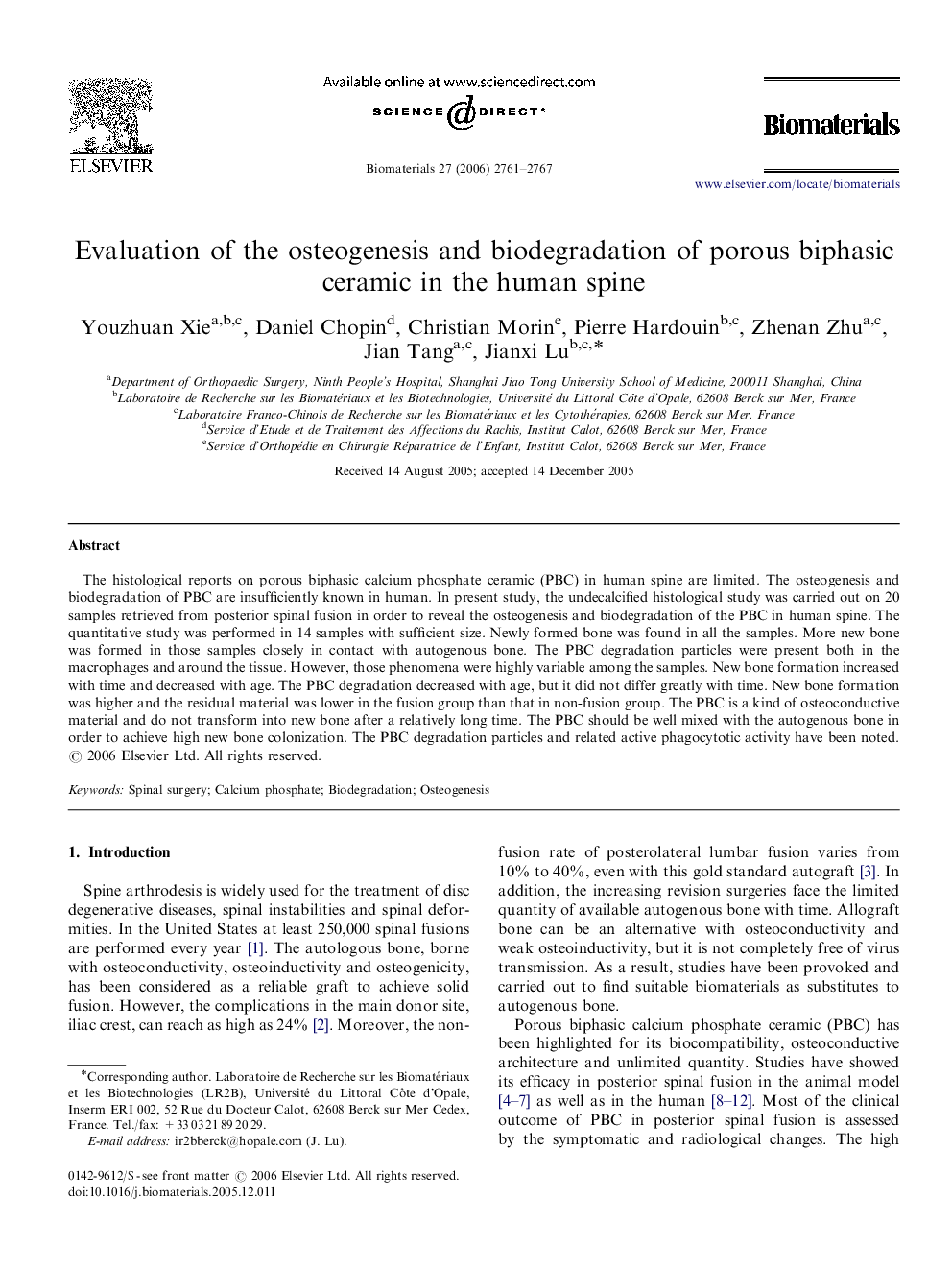| Article ID | Journal | Published Year | Pages | File Type |
|---|---|---|---|---|
| 11845 | Biomaterials | 2006 | 7 Pages |
The histological reports on porous biphasic calcium phosphate ceramic (PBC) in human spine are limited. The osteogenesis and biodegradation of PBC are insufficiently known in human. In present study, the undecalcified histological study was carried out on 20 samples retrieved from posterior spinal fusion in order to reveal the osteogenesis and biodegradation of the PBC in human spine. The quantitative study was performed in 14 samples with sufficient size. Newly formed bone was found in all the samples. More new bone was formed in those samples closely in contact with autogenous bone. The PBC degradation particles were present both in the macrophages and around the tissue. However, those phenomena were highly variable among the samples. New bone formation increased with time and decreased with age. The PBC degradation decreased with age, but it did not differ greatly with time. New bone formation was higher and the residual material was lower in the fusion group than that in non-fusion group. The PBC is a kind of osteoconductive material and do not transform into new bone after a relatively long time. The PBC should be well mixed with the autogenous bone in order to achieve high new bone colonization. The PBC degradation particles and related active phagocytotic activity have been noted.
